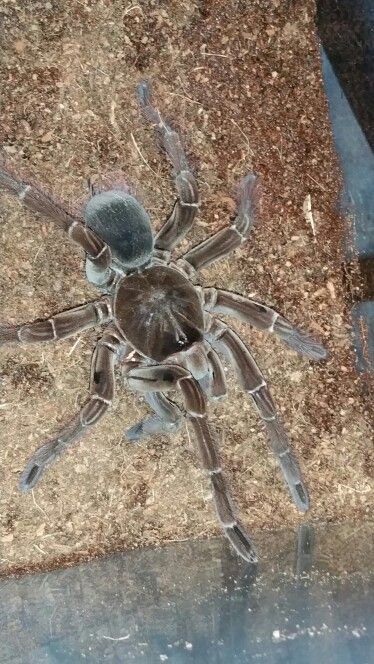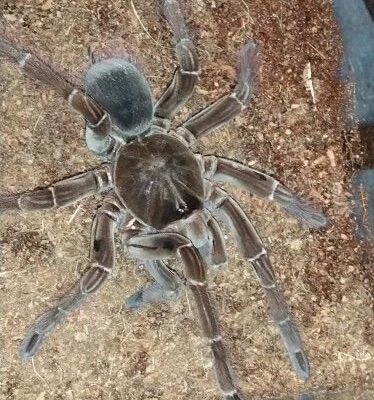
Imagine you’re at a dinner party, and the conversation turns to exotic pets. You mention the *Goliath Birdeater*, and suddenly everyone’s eyes widen. It’s not just a pet; it’s a conversation starter! But what makes it stand out among its tarantula cousins? We’ll explore it all—from its appearance and habitat to its behavior and diet—so that you’ll be the one leading the discussion next time.
What Is a Goliath Birdeater?
The *Goliath Birdeater*, scientifically known as *Theraphosa blondi*, is a striking member of the tarantula family. Hailing from the tropical rainforests of South America, especially in regions like the Amazon Basin, it wears its title as the largest spider with pride. In fact, it can reach a leg span of about 11 inches! That’s roughly the size of a dinner plate. If you saw one in the wild, you’d probably think twice before approaching.
But size isn’t everything. The *Goliath Birdeater* is known for its unique, hairy appearance. Its body is robust and covered in a fine layer of bristles. These bristles serve a purpose: they can irritate predators, making the spider less tasty for birds or mammals. Ironically, despite its name, it rarely eats birds. Instead, it primarily preys on insects and small rodents.
Physical Differences
When you compare the *Goliath Birdeater* to other tarantulas, the physical differences are striking. Other species, like the *Chilean Rose Tarantula* or the *Mexican Redknee*, tend to have much more modest sizes. For instance, the average *Chilean Rose* grows to about 4-5 inches in leg span, creating a stark contrast to its giant counterpart.
Additionally, the *Goliath Birdeater* has a different coloration scheme. While other tarantulas might come in vibrant reds or greens, the *Goliath* is typically brown or black, making it look more like a shadow than an exotic pet. This coloration helps it blend into the forest floor, hiding from predators.
Let’s break it down further:
- Size: Goliath (up to 11 inches) vs. average tarantulas (4-5 inches).
- Color: Brown/black for Goliath vs. more colorful species.
- Body Structure: Goliath is sturdier and bulkier.
Habitat and Distribution
In the grand scheme of things, habitat plays a pivotal role in the lives of tarantulas. The *Goliath Birdeater* thrives in humid, rainforest environments. It often burrows underground to protect itself from the elements and predators. This behavior is a stark contrast to other species, like the *Brazilian Black Tarantula*, which can be found in varied environments, including scrubland and grasslands.
While the *Goliath* is a native of South America, other tarantulas have a wider range. For instance, the *Mexican Redknee* can be found in a variety of habitats across Mexico and Central America, adapting to different climates.
This means that if you’re thinking about keeping a tarantula as a pet, it’s essential to consider not just the species but also where it comes from. The *Goliath* might need a more humid terrarium compared to its more adaptable cousins.
Feeding Habits
Here’s the thing: the *Goliath Birdeater* might sound intimidating, but it has a surprisingly simple diet. It mainly feeds on insects like crickets and locusts, but it can also munch on small mammals, frogs, and, yes, occasionally, birds—though it’s rare. Other tarantulas, like the *Pink-toed Tarantula*, have a similar diet but are much less picky.
Feeding habits can also reveal a lot about a spider’s behavior. The *Goliath* has a unique hunting strategy. It often waits for prey to wander close, then strikes with impressive speed. With its powerful fangs, it can subdue larger prey than many of its tarantula friends could manage.
When caring for a *Goliath Birdeater* as a pet, it’s essential to replicate its diet accurately. You wouldn’t want to serve your pet something it wouldn’t naturally eat!
Behavior and Temperament
If you’re thinking about adopting a tarantula, behavior matters. The *Goliath Birdeater* is often seen as more aggressive than other species. Its size might give it confidence. Other tarantulas, like the *Curly Hair Tarantula*, are known for their docile nature.
That being said, the *Goliath* doesn’t always lash out. It often prefers to stay hidden until it feels threatened. But if it does feel cornered? It might flick those irritating hairs we mentioned earlier.
Understanding tarantula behavior can help you provide the right environment. If you’re considering a *Goliath*, prepare for a spider that likes its space. It’s not the cuddly pet some might want, but its uniqueness is fascinating!
The Myth of the Goliath Birdeater
You might be wondering about that name, right? The *Goliath Birdeater* sounds like it’s out to hunt birds regularly, but that’s more of a myth than a fact. Sure, it can eat birds if the opportunity arises, but most of its diet consists of insects and small mammals due to their availability.
This misconception often leads to fear and misunderstanding about the species. While it’s certainly a sight to see, it’s not the menace some think it is. In fact, many exotic pet owners celebrate the *Goliath* for its unique characteristics, not its eating habits.
Understanding these myths helps paint a broader picture of the *Goliath* and its place in the ecosystem. In reality, it plays a crucial role in controlling insect populations, much like other tarantulas do.
Why Choose a Goliath Birdeater as a Pet?
So, you’re considering a *Goliath Birdeater*? Here’s why it might be a compelling choice. First, if you’re someone who loves unique and exotic pets, the *Goliath* is a conversation starter unlike any other. Its size and appearance can captivate friends and family.
However, potential owners should also be aware of their needs. Their habitat requires specific conditions to mimic their rainforest environment, and, as mentioned, they are not the most docile of pets.
If you’re up for the challenge, the rewards can be immense. You’ll not only have a unique creature to care for, but you’ll also deepen your understanding of arachnid behaviors and ecology. Just remember, patience and respect for your pet’s nature are key!
In closing, the *Goliath Birdeater* is more than just a giant spider; it’s a fascinating member of the tarantula family with unique traits that set it apart. While it may seem intimidating, its role in the ecosystem and potential as a pet reveal a lot about the wonders of nature. Whether you choose a *Goliath* or another species, there’s a whole world of tarantulas waiting to be explored.

